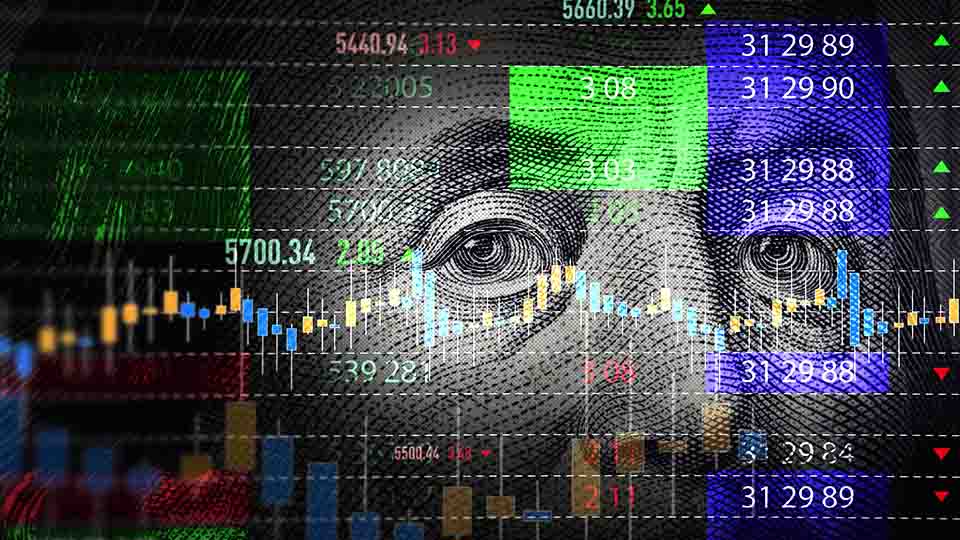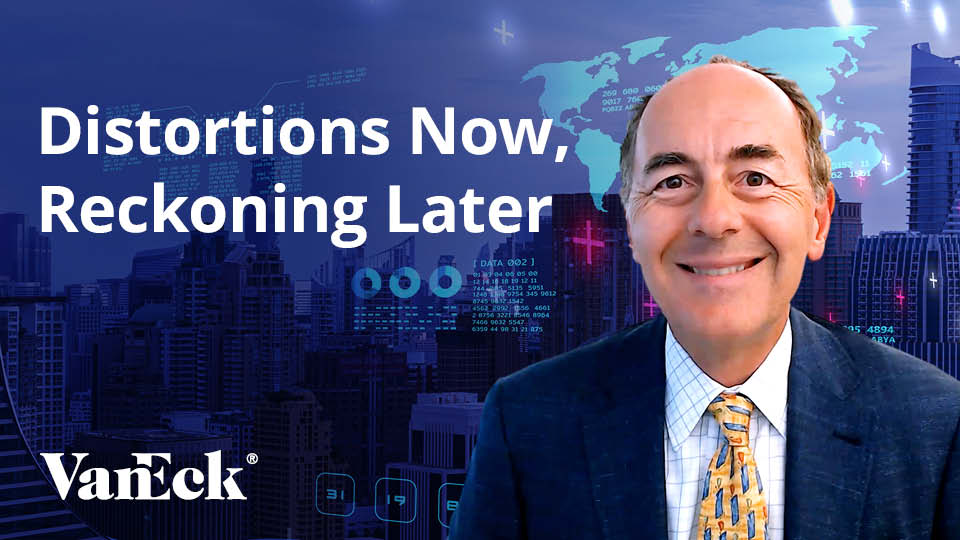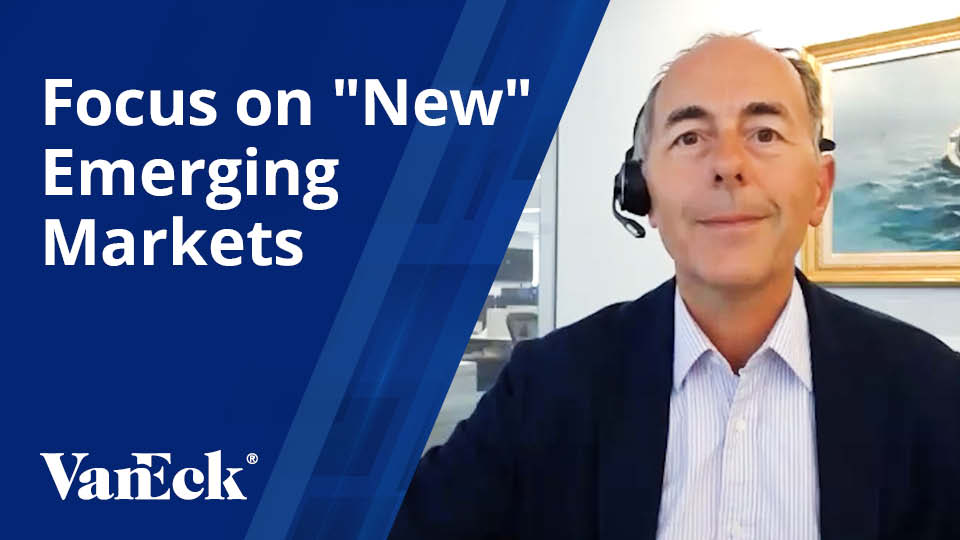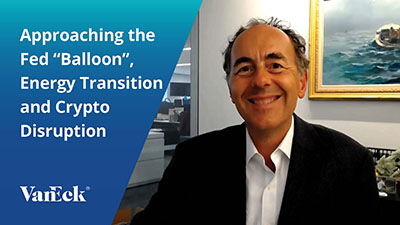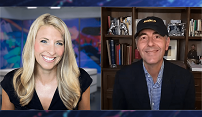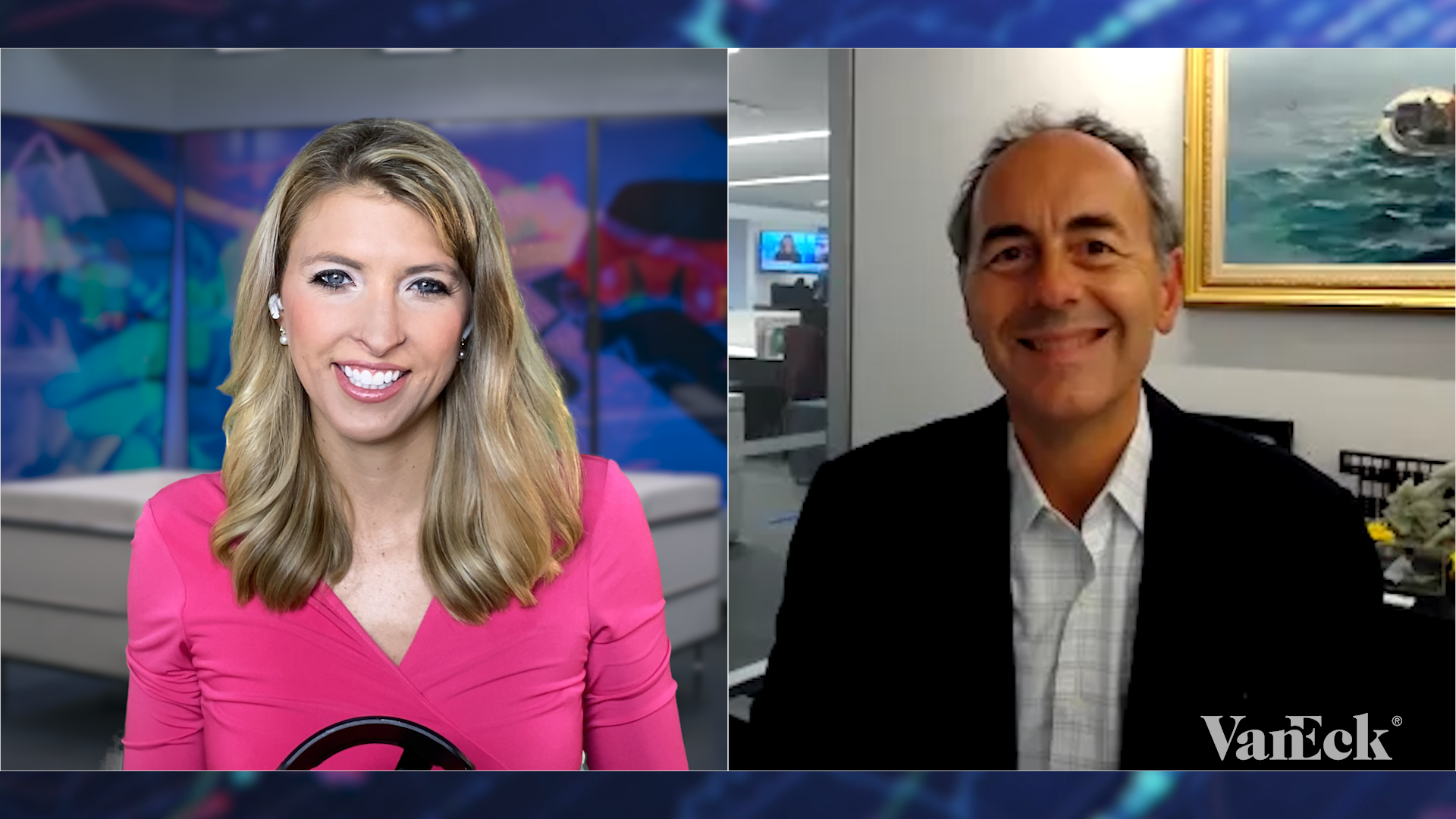2018 Investment Outlook: Eyes on Central Banks and Emerging Markets
09 February 2018
Watch Time 8:11
2018 Investment Outlook: Eyes on Central Banks and Emerging Markets
GILLIAN KEMMERER: Welcome. I’m Gillian Kemmerer. From a new global rate regime to one of the longest bull runs in U.S. history, 2018 is set to be an interesting year across asset classes. VanEck CEO, Jan van Eck, joins me in the studio to discuss his view of the macro landscape and to share the opportunities he's keeping an eye on. Jan, thanks for joining us.
JAN VAN ECK: It's great to be here.
KEMMERER: Today [January 31] is Fed interest rate decision day. So, from a macro point of view, why don't we start with U.S. fixed income. How do you assess the interest rate environment in 2018?
VAN ECK: Our outlook is for a year or two out, so it's not short term. But we actually think this is a big inflection point for fixed income. I think what is going to surprise the market is, as you've pointed out, we are in this long, long-term bull market for fixed income, that if you hit an inflection point, it could just jump higher. So we actually have a very aggressive call of 3.5% on the 10-year rate, which is pretty much the most aggressive that I'm aware of. But it is just not that far away. We are at 2.7% now and it can keep going up. There’s just that mindset that the market's not really ready for it. That's what our outlook is. The implication for investors is: Okay, for fixed income investors, what does that mean? If duration, or just interest rate changes, is your biggest risk for fixed income, actually you don't want to be in government bonds, and even in investment grade would go down in that scenario with a 10-year duration. However, emerging markets is okay and high yield is okay.
KEMMERER: In your 2018 outlook you had a graph of net issuance versus Fed purchases. The picture in the U.S. is very different from the picture in Europe. What are some of the implications of that?
VAN ECK: Globally we're “normalizing” interest rates. That process started about two years ago in the United States when we stopped quantitative easing and started increasing interest rates. We say that Europe is two years behind. This month they started to reduce their bond purchases and eventually we expect rates will start going positive in Europe. But the role of the central bank is much bigger in Europe relative to the market size than it is in the U.S. So, by one measure of new government debt relative to what the central bank was doing, if you use the party analogy (which I like to do), Europe has been using seven punch bowls relative to the size of its market, compared to the U.S. where we just had one punch bowl. You can do the math. The point is, that's a different party dynamic. If you have seven punch bowls, and you take them away, there could be a bigger overhang or impact on the market, and market psychology. We think it'll be orderly because the central banks globally have learned to move so slowly that it's just so predictable what they're doing. But because it was a lot of punch bowls, you've got to watch Europe. That's our point of 2018, watch the ECB’s [European Central Bank’s] actions way more than you might want to care about.
KEMMERER: Europe sounds like the better party to have attended. But it might be the place where you proceed with caution moving forward.
VAN ECK: Every day the ECB was coming into the market and buying billions and billions and billions of dollars’ worth of bonds, and that made everything predictable. If that starts going away, we just don't know what's going to happen exactly.
KEMMERER: There's another competing party and that has been the U.S. stock market, which is in its third longest, I believe, bull run in history.
VAN ECK: I think so now.
KEMMERER: When we look ahead to 2018, are you positioning for a correction?
VAN ECK: Well, all the signs are positive for equities. The world economy is growing. The U.S. economy is growing, nothing seems radically out of balance in terms of government policy. So equities should do well in that environment. But I think investors have to be prepared, and one of our themes at VanEck has been, Do you have strategies in your portfolio that will actually adjust to bear market signals? That's something that we have been focusing some attention on. We’re actually bullish, but we don't think investors are really prepared necessarily to think about anything else, because the market's been going up for 10 straight years.
KEMMERER: If there are three words that I think I heard more than any other in 2017, it was synchronized global growth. So the party was not just limited to the U.S. Do you continue to see the synchronization happening through 2018? Do you think there'll be some divergence?
VAN ECK: I think China is so important to the world economy that you shouldn't go into any investment committee without having a view on China. Because if China ever slows down, that will affect every asset class. What I liked about what happened in China last year is that technology, as in the U.S., has become a major part of their economy. So it's part of the new China that we talk about. And from an earnings perspective, from a stock market perspective, tech stocks in China are now 30% of the market capital of the overall market. That is just a dramatic change: it's not the old China manufacturing, property, stuff. That means, from a global growth perspective, if their growth is more balanced, between a consumer and old China, then that should be good for their growth going forward – that they have two pistons moving. That's positive news for your favorite phrase, synchronized global growth.
KEMMERER: I was going to ask you next about opportunities you see in the market, and given that you're talking about China, would emerging markets still be one of them? They had a great year in 2017.
VAN ECK: Absolutely. You know we love EM [emerging markets], cash flow for those stocks that continue to grow. It's been a little bit out of favor over the last five years. We thought investors would flood more into international and EM last year, given their talk and outlooks, than actually happened. So I think there's still some room to run there.
KEMMERER: What about on the debt side in EM?
VAN ECK: The debt story goes back to the interest rate story. Where the punch bowls and Europe and U.S. interest rates are normalizing. You want something in your portfolio that's not part of that whole dynamic. That's the advantage of emerging markets debt. The big issue on local currency debts is your view on the U.S. dollar. We don't have a strong house view on that and probably lean a little bit on the bear side. But we are not that worried about huge dollar strength if the whole world is growing.
KEMMERER: Obviously a story that plays into your view on the dollar is also commodities. They have been battered. Do you see a greater time on the horizon for them? And, if so, are there any specific sectors you like?
VAN ECK: I think commodities could be the best asset class in 2018. There are other strategists that believe that as well. It's just the timing of the cycle, where global growth for the first time is kicking in. So that helps demand. At the same time, commodity companies have been rationalizing over the last five years, so there's more price support. I think it is surprising people. When oil was $40, you’d never think it could get to $50, and when it was $50, it could never get to $60. Now it's at $60. I call it the grind cycle, because there's no joy in it and a lot of people aren't paying attention. But I do think it's interesting.
KEMMERER: Excellent. Jan, thanks so much for taking the time to give us both your macro outlook and some ideas for opportunities to keep an eye out for in 2018.
VAN ECK: Thank you.
KEMMERER: And thank you for tuning in. If you'd like to hear more insights from other VanEck experts, please visit
